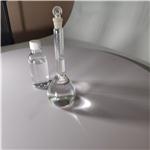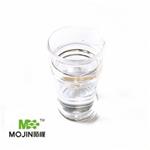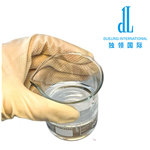- 1-Butanethiol
-

- $5.00 / 1KG
-
2023-08-16
- CAS:109-79-5
- Min. Order: 1KG
- Purity: 99%
- Supply Ability: 10000kg
- Butanethiol
-

- $0.00 / 25KG
-
2023-08-15
- CAS:109-79-5
- Min. Order: 1KG
- Purity: 99%
- Supply Ability: 50000KG/month
- Butanethiol
-

- $1.00 / 1kg
-
2022-11-17
- CAS:109-79-5
- Min. Order: 1kg
- Purity: 99%
- Supply Ability: 5000 Ton
|
| | Butanethiol Basic information |
| | Butanethiol Chemical Properties |
| Melting point | −116 °C(lit.) | | Boiling point | 98 °C(lit.) | | density | 0.842 g/mL at 25 °C(lit.) | | vapor density | 3.1 (vs air) | | vapor pressure | 83 mm Hg ( 37.7 °C) | | FEMA | 3478 | 1-BUTANETHIOL | | refractive index | n20/D 1.443(lit.) | | Fp | 55 °F | | storage temp. | Store below +30°C. | | solubility | 0.597g/l | | form | Liquid | | pka | 11.51 at 25 °C (23.0% aqueous tert-butyl alcohol, Friedman et al., 1965) | | Specific Gravity | 0.842 | | color | Colorless | | Odor | Strong skunk-like. | | Odor Threshold | 0.0000028ppm | | explosive limit | 1.4-11.3%(V) | | Odor Type | sulfurous | | Water Solubility | 0.60 g/100 mL. Slightly soluble | | Sensitive | Air Sensitive | | JECFA Number | 511 | | Merck | 14,1577 | | BRN | 1730908 | | Henry's Law Constant | (x 10-3 atm?m3/mol):
7.04 at 20 °C (approximate - calculated from water solubility and vapor pressure) | | Exposure limits | NIOSH REL: 15-min ceiling 0.5 ppm (1.8 mg/m3), IDLH 500 ppm; OSHA
PEL: TWA 10 ppm (35 mg/m3); ACGIH TLV: TWA 0.5 ppm (adopted). | | Dielectric constant | 4.9500000000000002 | | Stability: | Stable. Incompatible with oxidizing agents, bases, alkali metals. Highly flammable. May discolour on exposure to air. | | LogP | 2.28 | | CAS DataBase Reference | 109-79-5(CAS DataBase Reference) | | NIST Chemistry Reference | 1-Butanethiol(109-79-5) | | EPA Substance Registry System | Butyl mercaptan (109-79-5) |
| | Butanethiol Usage And Synthesis |
| Description | Butane thiol, also known as butyl mercaptan, is a volatile, clear to yellowish liquid with a fetid (extremely foul-smelling) odor, commonly described as "skunk" odor. In fact, butanethiol is structurally similar to several major constituents of a skunk's defensive spray but is not actually present in the spray. The scent of butanethiol is so strong that the human nose can easily detect it in the air at concentrations as low as 10 parts per billion. The threshold level for 1-butane thiol is reported as 1.4 ppb. | | Chemical Properties | colourless liquid | | Chemical Properties | 1-Butanethiol has an unpleasant (skunk) odor. | | Chemical Properties | Butanethiol is chemically classified among the thiols, which are organic compounds with molecular formulas and structural formulas similar to alcohols, except that sulfur-containing sulfhydryl group (- SH) replaces the oxygen-containing hydroxyl group in the molecule. Butanethiol's basic molecular formula is C4H9SH, and its structural formula is similar to that of the alcohol n-butanol. Butanethiol is prepared by the free radical catalyzed addition of hydrogen sulfide to 1-butene. Commercially, this is performed using ultraviolet light. Butanethiol is a thiol of low molecular weight, and it is highly flammable. | | Chemical Properties | Butanethiol is also known as butyl mercaptan. It is a volatile, highly flammable clear to
yellowish liquid with an extremely foul-smelling, strong, garlic-, cabbageor skunk-like Butanethiol is also known as butyl mercaptan. It is a volatile, highly flammable clear to
yellowish liquid with an extremely foul-smelling, strong, garlic-, cabbageor skunk-like | | Physical properties | Clear, colorless liquid with a strong garlic, cabbage, or pungent skunk-like odor. Odor threshold
concentrations of 0.0028 ppbv and 3.7 μg/m3 (1.0 ppbv) were reported by Katz and Talbert (1930)
and Nagata and Takeuchi (1990), respectively. | | Occurrence | Reported found in beef, cheddar cheese, raw chicken, cooked potatoes, beer and boiled eggs. | | Uses | Intermediate, solvent. | | Uses | Solvent; intermediate in the production
of insecticides and herbicides; gas odorant | | Uses | Butanethiol is used as an industrial solvent , and as an intermediate for cotton defoliants. It is some times placed in the "stink bombs" and "stink perfumes" for prankster. | | Definition | ChEBI: Butanethiol is an alkanethiol. | | Synthesis Reference(s) | Journal of the American Chemical Society, 72, p. 1073, 1950 DOI: 10.1021/ja01159a005 | | General Description | Butanethiol is also known as butyl mercaptan. It is a volatile, clear to yellowish liquid with an extremely foul smell, with a strong, garlic-, cabbage-, or skunk-like odour. It is slightly oily in nature. Butanethiol is used as a chemical intermediate in the production of insecticides and herbicides. It is also used as a gas odorant. | | Air & Water Reactions | Highly flammable. Slightly soluble in water. | | Reactivity Profile | Butanethiol is incompatible with acids, diazo and azo compounds, halocarbons, isocyanates, aldehydes, alkali metals, nitrides, hydrides, and other strong reducing agents. Reactions with these materials generate heat and in many cases hydrogen gas. May liberate hydrogen sulfide upon decomposition or reaction with an acid. Incompatible with strong oxidizing agents [USCG, 1999]. | | Hazard | Toxic by inhalation. Flammable, dangerous
fire risk. Upper respiratory tract irritant. | | Health Hazard | Inhalation causes loss of sense of smell; muscular weakness. convulsions, and respiratory paralysis may follow prolonged exposure. Contact of liquid with eyes or skin causes slight irritation. Ingestion causes nausea. | | Health Hazard | Exposures to butanethiol cause adverse health effects and poisoning. The symptoms of
poisoning in exposed workers include, but are not limited to, asthenia, muscular weak ness, malaise, sweating, nausea, vomiting, headache, restlessness, increased respiration,
incoordination, muscular weakness, skeletal muscle paralysis in most cases, heavy to mild
cyanosis, lethargy and/or sedation, respiratory depression followed by coma. Severe cases
of poisoning lead to death of the exposed worker.
In laboratory studies, animals given intraperitoneal and oral exposures of butane thiol survived near-lethal single doses. However, after 20 days post-treatment, animals
showed pathological changes involving liver and kidney damage. The pathomorpho logical changes in the liver included cloudy swelling, fatty degeneration, and necrosis.
Pathological changes in the kidneys included cloudy swelling, and the lungs displayed
capillary engorgement, patchy edema, and occasional hemorrhage | | Chemical Reactivity | Reactivity with Water No reaction; Reactivity with Common Materials: No reactions; Stability During Transport: Stable; Neutralizing Agents for Acids and Caustics: Not pertinent; Polymerization: Not pertinent; Inhibitor of Polymerization: Not pertinent. | | Safety Profile | Poison by
intraperitoneal route. Moderately toxic by
ingestion. An eye irritant. Dangerous fire
hazard by exposure to heat, flame, sparks, or
powerful oxidizers. Reacts violently with
HNO3. Incompatible with acids, acid fumes,
oxidizing materials, heat, flame, and sparks.
To fight fire, use alcohol foam. When
heated to decomposition it emits toxic SOx.
See also MERCAPTANS. | | Safety | Butanethiol is a very noxious and caustic chemical compound, and at sufficiently high concentrations, it produces serious health effects in both humans and animals, especially as a result of prolonged exposure. Higher concentrations can lead to unconsciousness and coma after prolonged exposure. Contact with the skin and mucous membranes causes burns, and contact with the eyes can lead to blurred vision or complete blindness.
Inhalation may cause weakness, confusion, cough, dizziness, drowsiness, headache, nausea, vomiting, and shortness of breath. The substance irritates the eyes, the skin, and the respiratory tract. It may cause effects on the thyroid and the nervous system and could cause lowering of consciousness. | | Potential Exposure | Butyl mercaptan is a flammable, colorless liquid with a strong, skunk-like odor. The Odor Threshold in
air is 0.00097 ppm. Molecular weight 5 90.19; Specific
gravity (H2O:1) 5 0.83 @ 20�C; boiling point 5 99�C;freezing/melting point 5 2116�C; vapor
pressure 5 35 mmHg @ 20�C; 75 mmHg @ 34.5�C; relative vapor density (air 5 1) 5 3.1; Flash point 5 2�C
(cc); Autoignition temperature # 225�C. Explosive limits: LEL: 1.4%; UEL: 10.2%. Hazard identification (based
on NFPA-704 M Rating System): Health 1; flammability 3;
reactivity 0 ?. Slightly soluble in water; solubility 5 0.06%
@ 20�C. | | First aid | If this chemical gets into the eyes, remove anycontact lenses at once and irrigate immediately for at least15 min, occasionally lifting upper and lower lids. Seekmedical attention immediately. If this chemical contactsthe skin, remove contaminated clothing and wash immediately with soap and water. Speed in removing materialfrom skin is of extreme importance. Shampoo hairpromptly if contaminated. Seek medical attention immediately. If this chemical has been inhaled, remove fromexposure, begin rescue breathing (using universal precautions, including resuscitation mask) if breathing hasstopped and CPR if heart action has stopped. Transferpromptly to a medical facility. When this chemical hasbeen swallowed, get medical attention. Give large quantities of water and induce vomiting. Do not make an unconscious person vomit. | | Environmental fate | Chemical/Physical. Releases toxic sulfur oxide fumes when heated to decomposition (Sax and
Lewis, 1987). | | storage | Color Code—Red: Flammability Hazard: Store ina flammable liquid storage area or approved cabinet awayfrom ignition sources and corrosive and reactive materials.Store in tightly closed containers in a cool, well-ventilatedarea away from heat, oxidizers, or acids. | | Shipping | UN2347 Butyl mercaptan, Hazard Class: 3;
Labels: 3—Flammable liquid | | Purification Methods | Dry the thiol with CaSO4 or Na2SO4, then reflux it over magnesium, or dry with, and distil it from CaO, under nitrogen [Roberts & Friend J Am Chem Soc 108 7204 1986.] It has been separated from hydrocarbons by extractive distillation with aniline. Dissolve it also in 20% NaOH, extract with a small amount of *C6H6, then steam distil it until clear. The solution is then cooled and acidified slightly with 15% H2SO4. The thiol is distilled out, dried with CaSO4 or CaCl2, and fractionally distilled under N2 [Mathias & Filho J Phys Chem 62 1427 1958]. It has also been purified by precipitation as the lead mercaptide from alcoholic solution, then regeneration by adding dilute HCl to the residue followed by steam distillation. All operations should be carried out in a fume cupboard due to the TOXICITY and obnoxious odour of the thiol. [Beilstein 1 IV 1555.] | | Incompatibilities | May form explosive mixture with air.
Incompatible with oxidizers (chlorates, nitrates, peroxides,
permanganates, perchlorates, chlorine, bromine, fluorine,
etc.); contact may cause fires or explosions. Keep away
from alkaline materials, strong bases, strong acids, oxoacids, epoxides. Attacks some plastics and rubber | | Waste Disposal | Incineration (1093�C) followed by scrubbing with a caustic solution. | | Precautions | Butanethiol decomposes an heading and release toxic fumes. It reacts with strong acids,
bases and strong oxidants. Workers during handling of butanethiol should be very careful,
should avoid open flames, sparkings, and smoking. Chemical vapor/air mixtures cause
explosion ha3 and workers should wear protective cloathing, safety goggles and breathing
apparatus and should work in good ventillation |
| | Butanethiol Preparation Products And Raw materials |
|